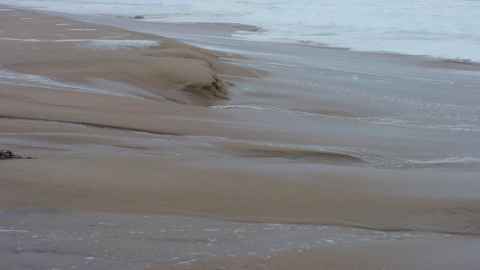Understanding waves, sand dunes and robots
11 November 2019
How will the sand dunes on our coastlines be affected by climate change? Can we make robotic devices that have the human-like dexterity of, for instance, our little finger?

Researchers at the Faculty of Engineering aiming to answer these questions have been given a significant research boost in the latest round of Te Pūtea Rangahau a Marsden/Marsden funding.
Dr Colin Whittaker has been awarded $300,000 for research that aims to better understand the impact of different types of waves on coastal dunes, and Dr Tim Giffney has been awarded $300,000 to develop a fabrication technology that could allow for the 3D printing (or Additive Manufacturing) of a mechatronic device that is more like a biological system.
As Dr Giffney notes, a mechatronic device consists of structural parts which are combined with the transducers — that, the sensors and/or actuators that give a device its functionality.
Until now, the parts and the transducers have had to be produced separately and then combined in the final assembly.
However it would be better to develop a 3D printing process in which the functioning devices could be fabricated in one process, with the circuitry and transducers already built inside structural parts. This could allow for the manufacturing of devices in which the different parts of the whole more closely resemble the level of integration seen in biological systems.
The first part of the project involves developing the single step printing of piezoelectric transducers — piezoelectric materials are materials that have the ability to generate internal electrical charge from applied mechanical stress.
“People can produce large complex systems, such as vehicles, and small complex systems, such as microchips, but we have yet to develop a fabrication technology allows us to create devices that can do what people can. This could help us create devices that achieve the close combination of sensing (the nerves of the fingertip), actuation (muscle), and mechanical structure (skin and bone) found in nature.”
Sandunes provide one of the last barriers against the impact of climate change but are also extremely vulnerable to it.
Nature is also the focus of Dr Whittaker's research - the coastal sandunes found in nature. As well as being an important ecological habitat, they shield some of the most intensively populated regions on earth from the ravages of ocean storms.
“They provide one of the last barriers against the impact of climate change but are also extremely vulnerable to it,” he says.
As he notes, our coastlines are formed and re-shaped by the force of the wind and currents but as sea levels rise, they will become increasingly exposed to the impact of waves.
However, not all waves are the same. “Some may result in more sediment being deposited on the dune systems, some may lead to erosion of the dunes, or a combination of both” explains Dr Whittaker.
He and his team will, under laboratory-controlled conditions, measure the effects of over-wash — that is, the flow of water and sediment over a coastal dune during storm events or high seas.
They will then also use numerical simulations to determine the impact of different types of waves on a real-life model, to better understand how even small differences in the dune shape may cause the system response to ‘tip’ from erosive to accretionary.
Climate change is likely to affect both the water levels and storminess of our oceans. “Without detailed knowledge of the erosive or accretionary effect of dune over-wash, we can’t predict the long-term resilience of dune systems to the effects of our changing climate, or which systems are most vulnerable,” says Dr Whittaker.
“This knowledge is needed to underpin the coastal policies that guide the planning and preservation of coastal habitats for future generations.”
Media contact
Margo White I Media adviser
DDI 09 923 5504
Mob 021 926 408
Email margo.white@auckland.ac.nz